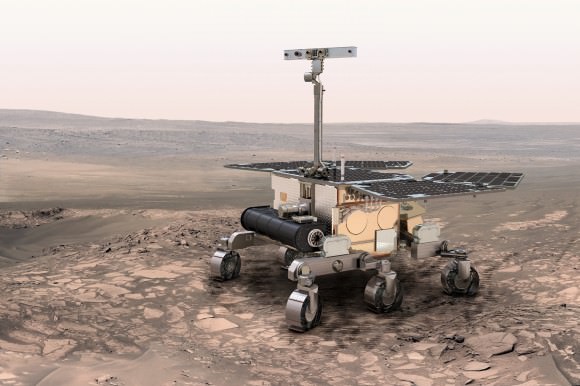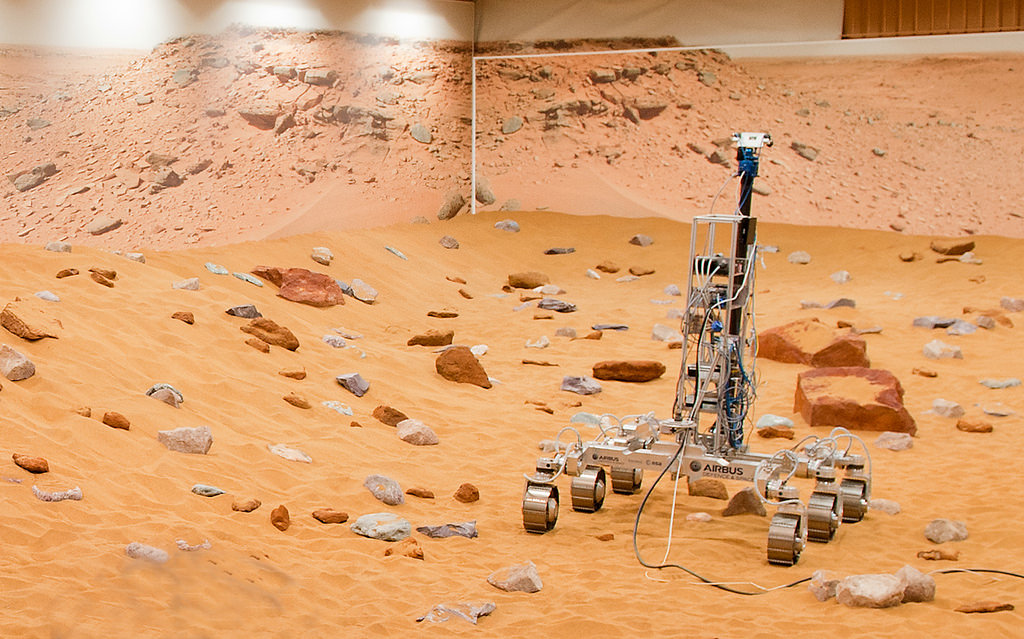The five-year-old in me is really excited at picturing rovers in a sandbox. While piloting these machines around simulated Mars terrain has its own inherent joy, it’s also a valuable tool for planners trying to figure out how to get the rovers rolling on the Red Planet.
ExoMars is heading that way in 2018, prompting the European Space Agency and Airbus to renovate a “Mars yard” to test out different design ideas, which they highlighted in an event last week that Universe Today was unable to attend.
The real rover will never see this yard — ESA wants to make sure the machine is pristine for launch — but the simulated terrain will come in handy when controllers want to simulate rover movements on the Red Planet during the mission. Simultaneously, the team showcased a rover prototype called “Bryan.”
A press release for ESA mentioned that the yard had been upgraded, but the agency did not respond to a Universe Today e-mail request asking what those upgrades are or how much they cost. Previous press releases about the facility said that it was eight meters by eight meters (26 feet by 26 feet) in size, while current ones say that the facility is 30 meters by 13 meters (100 feet by 43 feet).

Also last week, ESA held workshops considering where to land the rover. You can view more information about the selection process at this ESA site, but below are a couple of interesting paragraphs from the site:
“ExoMars 2018 has two science elements. A rover will investigate the local geology and search for signs of past and present life while a surface platform will study the Martian environment. The landing site must be a geologically diverse site that is ancient, and shows the strong potential for once having been habitable,” ESA stated.
“For ancient, read older than 3.6 billion years. Potentially habitable in this context means that there must be abundant evidence that water was once present for extended periods or was frequently recurring at the site. It must also be safe for landing. No safe landing, no science.”
You can read more about ExoMars at this website.
Source: European Space Agency

